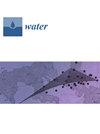Natural Water Sources and Small-Scale Non-Artisanal Andesite Mining: Scenario Analysis of Post-Mining Land Interventions Using System Dynamics
IF 3
3区 环境科学与生态学
Q2 ENVIRONMENTAL SCIENCES
引用次数: 0
Abstract
Small-scale open-pit, non-artisanal mining of low-value ores is an understudied practice despite its widespread occurrence and potential impact on freshwater resources due to mining-induced land-use/cover changes (LUCCs). This research investigates the long-term impacts of andesite mining in Pasuruan, Indonesia, on the Umbulan Spring’s water discharge within its watershed. System Dynamics (SD) modeling captures the systemic and systematic impact of mining-induced LUCCs on discharge volumes and groundwater recharge. Agricultural and reservoir-based land reclamation scenarios then reveal post-mining temporal dynamics. The no-mining scenario sees the spring’s discharge consistently decrease until an inflection point in 2032. With mining expansion, reductions accelerate by ~1.44 million tons over two decades, or 65.31 thousand tons annually. LUCCs also decrease groundwater recharge by ~2.48 million tons via increased surface runoff. Proposed post-mining land interventions over reclaimed mining areas influence water volumes differently. Reservoirs on reclaimed land lead to ~822.14 million extra tons of discharge, 2.75 times higher than the agricultural scenario. Moreover, reservoirs can restore original recharge levels by 2039, while agriculture only reduces the mining impact by 28.64% on average. These findings reveal that small-scale non-artisanal andesite mining can disrupt regional hydrology despite modest operating scales. Thus, evidence-based guidelines are needed for permitting such mines based on environmental risk and site water budgets. Policy options include discharge or aquifer recharge caps tailored to small-scale andesite mines. The varied outputs of rehabilitation scenarios also highlight evaluating combined land and water management interventions. With agriculture alone proving insufficient, optimized mixes of revegetation and water harvesting require further exploration.天然水源与小规模非手工安山岩开采:利用系统动力学对采矿后土地干预进行情景分析
尽管低价值矿石的小规模露天非手工开采广泛存在,而且由于采矿引起的土地利用/植被变化(LUCCs)可能对淡水资源产生影响,但对这种做法的研究却不充分。本研究调查了印度尼西亚 Pasuruan 的安山岩开采对其流域内 Umbulan 泉水排放的长期影响。系统动力学(SD)建模捕捉了采矿引起的 LUCC 对排水量和地下水补给的系统性和系统性影响。然后,以农业和水库为基础的土地复垦方案揭示了采矿后的时间动态。在不采矿的情况下,泉水排放量持续减少,直到 2032 年出现拐点。随着采矿规模的扩大,在 20 年内减少的速度加快了约 144 万吨,即每年减少 6.531 万吨。LUCC 还会通过增加地表径流使地下水补给减少约 248 万吨。建议对复垦采矿区进行的采矿后土地干预对水量的影响不同。复垦土地上的水库会导致约 8.2214 亿吨的额外排放,是农业方案的 2.75 倍。此外,水库可在 2039 年前恢复原有的补给水平,而农业平均只能减少 28.64% 的采矿影响。这些研究结果表明,尽管经营规模不大,但小规模非手工安山岩采矿会破坏区域水文。因此,需要制定以证据为基础的指导方针,根据环境风险和矿区水预算对此类矿山进行许可。政策选择包括针对小型安山岩矿的排放或含水层补给上限。恢复方案的不同产出也突出了对土地和水资源综合管理措施的评估。事实证明,仅靠农业是不够的,需要进一步探索重新植被和集水的优化组合。
本文章由计算机程序翻译,如有差异,请以英文原文为准。
求助全文
约1分钟内获得全文
求助全文
来源期刊

Water
WATER RESOURCES-
CiteScore
5.80
自引率
14.70%
发文量
3491
审稿时长
19.85 days
期刊介绍:
Water (ISSN 2073-4441) is an international and cross-disciplinary scholarly journal covering all aspects of water including water science and technology, and the hydrology, ecology and management of water resources. It publishes regular research papers, critical reviews and short communications, and there is no restriction on the length of the papers. Our aim is to encourage scientists to publish their experimental and theoretical research in as much detail as possible. Full experimental and/or methodical details must be provided for research articles. Computed data or files regarding the full details of the experimental procedure, if unable to be published in a normal way, can be deposited as supplementary material.
 求助内容:
求助内容: 应助结果提醒方式:
应助结果提醒方式:


